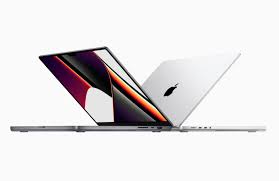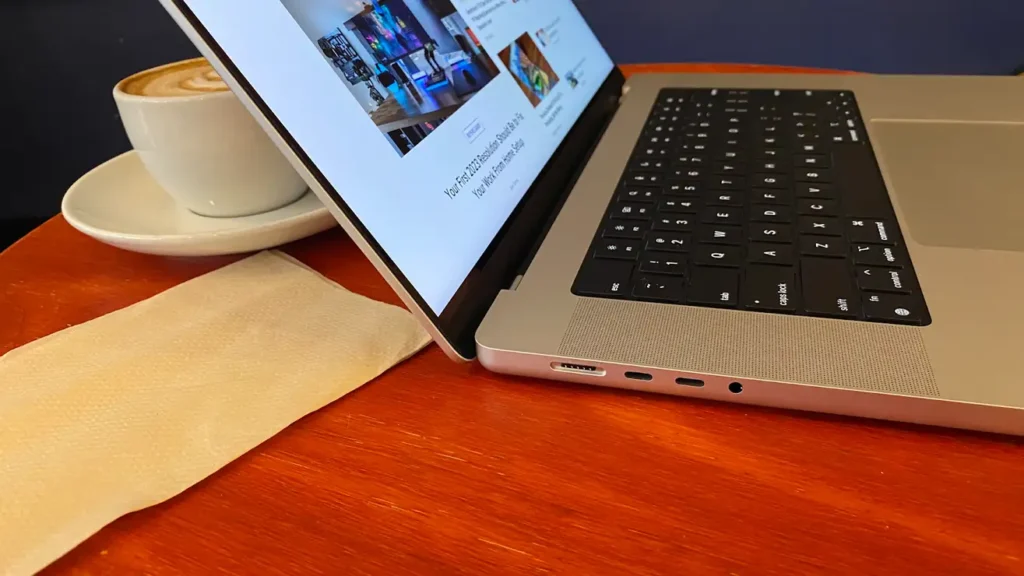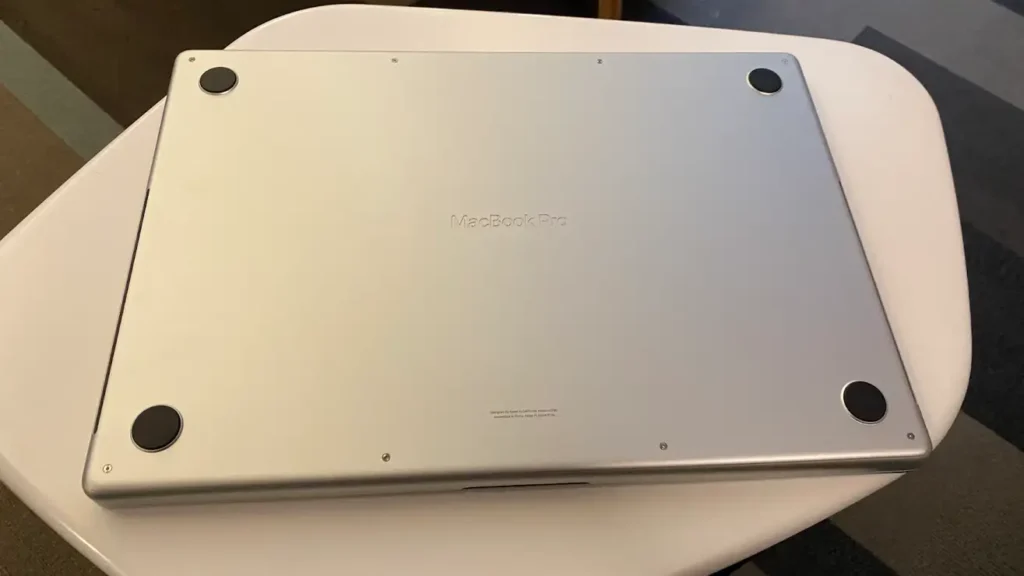Apple’s M2 Pro and Max powered MacBook Pros are impressive machines. But there’s nothing here that makes upgrading a must.
The MacBook Pro 2023
The 14- and 16-inch MacBook Pro models from Apple for 2023 are now available, and they mostly resemble the 2021 ones. But the interiors are something but. The M2 Pro and M2 Max CPUs are introduced in this generation of Apple powerhouses, providing professionals with an M2 MacBook Pro that is both powerful and does not utilise a design from the previous decade.
But current generation of Pros still feels secure adopting the design from 2021. There must be a better method to get a respectable webcam on your $2,000+ laptop than a notch, given basic premium features like OLED and touchscreens still aren’t available, unlike on PCs.

MacBook Pro Price and Configurations
The review device Apple provided for this article wasn’t the most advanced model, but it was still quite capable and pricey. With a 12-core CPU, 19-core GPU M2 Pro chip, 32GB of RAM, and 2TB of storage, the MacBook Pro 16-inch is what we received. That will cost you $3,500, but if you reduce the model’s RAM and storage capacities, you can have it for $2,700 or even $2,500.
A 16-inch variant with the 12-core CPU and 38-core GPU M2 Max processor is also available for $3,500. For that price, you’ll also receive 1TB of storage and 32GB of RAM. Spending $6,500 will get you a ridiculous 96GB of RAM and 8TB of storage.
The new M2 Pro and Max processors, which start at $2,000 for an M2 Pro with a 10-core CPU and 16-core GPU, are included in the 14-inch MacBook Pros that will be available in 2023. For an M2 Max processor with a 12 core CPU and 30-core GPU, 96GB of RAM, and 8TB of storage, the 14-inch MacBook Pros may go as high as $6,300. However, you can also get an M2 Max model with less features beginning at $3,100.

All variants have a mini-LED display with a variable refresh rate called “Liquid Retina XDR” that can play HDR content and reach 120Hz. At 3,456 x 2,234, the display’s resolution is just under 4K.
If all those figures are unclear to you, simply remember that 16 to 32GB of RAM should be plenty unless your job particularly requires more. The amount of data you like to retain on your laptop vs on the cloud or on an external storage device will determine your storage requirements. Most people will probably be good with 1TB.

When reviewing the last 14- and 16-inch MacBook Pro models in 2021, fashion-forward tech YouTuber Marques Brownlee vowed to wear socks and sandals for the whole day if the new models retained a notch. The “I’ll eat my hat” threat isn’t nearly the most severe one we’ve seen, but I’m looking forward to seeing MKBHD cosplay Linus Tech Tips in his next video because the notch is still present.
The notch is still in good condition. In fact, it works better here than on the MacBook Air since the bigger screen and small bezels allow it blend into the background when you aren’t looking at it. However, the notch’s justification for being there is debatable. It serves merely to incorporate the facetime sensor with the laptop’s internals, giving the camera additional illumination intelligence. However, with Lenovo inventing solutions like its swappable Magic Bay webcam add-ons and continuity camera allowing iPhones to function as webcams, maybe I should be the one vowing to make a daring fashion decision if the notch is still there on the upcoming line of Pros.

There are also other things in addition to the notch. With two Thunderbolt 4 ports, a 3.5mm headphone jack, and a Magsafe charging connector on the left side and an SD card reader, HDMI port, and second Thunderbolt 4 port on the right side, the MacBook Pros from this year really share the exact same general appearance as those from 2021.
It’s a suitable arrangement for a workstation, and I gave it high marks when the M2 MacBook Air introduced a version of it last year. Although there are more connectors than we had grown accustomed to when Mac overhauled the Pro series two years ago, the lack of USB-A connections limits the laptop’s ability to compete in the gaming market, where Apple continues to claim true rival status. I had to connect a USB-C hub simply to get my mouse to function so that I could test Resident Evil village on this MacBook’s native Apple silicon connection. Not a difficult request, but also not quite “native” in experience. In a similar vein, a DisplayPort connector would make it simpler for gamers to connect some external displays with high resolution and frame rates.

Additionally, I’d like to see Apple try out other color schemes for the Pro range. It’s becoming a little monotonous that this year’s models are only available in silver or “space gray,” also known as “light gray” and “dark gray.” It’s about time Apple’s most devoted consumers have access to the same type of choice as the Air models from the previous year, which brought gold and navy blue hues to the Air range.
The MacBook Pro’s M2 is a Two Minute Monster
The greatest difference to the new 14 and 16 inch MacBook Pros is that new processor, in contrast to the M2 MacBook Air, which received a Pro-like facelift with its new iteration. Given how good the M1 Pro was already, it makes it quite difficult for most people to sell the laptop. The M2 Pro and Max powered MacBook Pros do fit a niche for power users, even though this is a more gradual update than the M1 series considering the letdown that was the 13-inch MacBook Pro with M2. Finally, you can utilize Apple’s most recent internal silicon with a fan and a contemporary, svelte chassis.
The end result is a laptop that completes the majority of productivity benchmarks in little over 2.5 minutes. Using Handbrake, convert a 4K video to a 1080p file? 32 seconds of two minutes. Blender rendering a BMW? No matter if the laptop used the GPU or CPU to complete the task, it took two minutes and 22 seconds.
For comparison, when we examined the MacBook Pro with an M1 Max in 2021, the identical 4K file transcoded in 4 minutes and 50 seconds. Additionally, it completed a Blender render using the CPU in three minutes and twenty-one seconds and a GPU in four minutes and fifty-six seconds.
This 4K movie required the basic M2 MacBook Pro 13-inch to transcode in four minutes and three seconds, render Blender’s BMW file in four minutes and 35 seconds on the CPU, and render in four minutes and 36 seconds on the GPU.

Therefore, this new laptop frequently reduces the time needed to do particular chores by practically half, and in every instance, it can finish them in less time than it takes to brew a cup of coffee.
Given that I grind my coffee beans fresh, 4 minutes is also around the time it takes me to brew a cup of coffee, thus how much use you make of the faster speed depends depend on how frequently and how large your files are. In a professional setting, the time saved could be worth money.
For a non-Mac comparison, the Handbrake transcode on the Dell XPS 13 Plus took 9 minutes and 35 seconds to finish. This device is a member of a series that is typically praised for producing Windows-based MacBook rivals. Nowhere near. With an Intel Core i7-1280p processor, its Blender performance was nearly on line with the M1 Max MacBook Pro, requiring four minutes and 27 seconds to do a CPU-based render.
On the new MacBook Pro, we also ran Geekbench, a synthetic test that evaluates the overall performance of the machine. While Geekbench does not employ a time-based scoring methodology, it was as remarkable. An M2 Pro chip-equipped MacBook Pro from 2023 achieved 1,965 on single-core workloads and 15,148 on multi-core ones. In comparison to the 1,577 and 12,663 scores from the 2021 MacBook Pro with an M1 Max, this score is respectable and far superior to the 1,714 and 9,947 scores from the Dell XPS 13 Plus.
You Can Game On It
Due to compatibility concerns, gaming on Mac is still somewhat of a pipe dream. There are several games that, out of the box, cannot be played on a Mac, including benchmarking favorites like the Far Cry series. The MacBook Pros of 2023 don’t alter that, but they do demonstrate that, if game developers are willing to embrace Mac, there is the power required for AAA gaming.

Resident Evil Village’s native Apple silicon port was without a doubt the most spectacular gaming experience I had on the 16-inch M2 Pro MacBook Pro. Capcom collaborated with Apple to create this version of the game from the ground up for the M series, as opposed to running the x86 version of the game through an emulation layer (x86 being the CPU architecture used by the majority of Windows PCs).
Although the M2 Pro truly gives it room to breathe, it has been available since November of last year, long after our assessment of the previous generation of 14 and 16-inch MacBook Pros.
While taking it slow and replaying action sequences with a variety of various visual presets for roughly two to three hours to get to Elena’s house, fan noise was never an issue and the laptop only ever became somewhat warm to the touch. Even on presets with lots of visuals, the framerate never fell below 60, which is excellent.

I played the game most of the time at 1920 x 1200 resolution with the “prioritize graphics” and “max” presets. At the same resolution, I also tested the “prioritize performance” option, but I quickly realized that the benefits weren’t worth the (admittedly little) loss in texture quality.
No matter the configuration, though, the experience was one that was befitting of a system, if more akin to the Xbox Series S than the X. When “prioritize graphics” was active, I frequently experienced frame rates between 70 and 90, whereas “max” typically resulted in frame rates between 60 and 80. That significant difference may be attributed to the fluctuating amount of action on screen, since confrontations involving dozens of zombi—er—lycans naturally occurred at a far lower frame rate than merely standing and taking in the surroundings.
The game was even able to test the MacBook’s 120 hz display when the frame rate sometimes reached 120. These instances were more common with the “prioritize performance” option, while battle frame rates remained largely constant. When I picked the “prioritize performance” preset, I also had to manually unlock the frame rate because it by default caps the game at 30 frames per second, which is far less than what the 16-inch M2 Pro MacBook Pro can produce even on its worst day.

Long Lasting Battery
The M2 Pro and Max MacBook Pros most likely outperform their predecessors in terms of battery life. The M2 Pro MacBook Pro lasted for 16 hours and 40 minutes before shutting down on our battery benchmark, which runs a 24-hour film continuously at 200 nits without any power saving settings or automatic brightness changes switched on. The battery life of Macs is well-known for being long, but that’s almost twice as long as the M1 Max MacBook Pro, which lasted 8 hours and 39 minutes in the same test. It even outperforms the less power-hungry 13-inch MacBook Pro with a basic M2 CPU, which in our test lasted 15 hours and 47 minutes.
Windows machines simply can’t compare, with the Dell XPS 13 Plus getting 6 hours and 38 minutes on our test.
A Spacious Keyboard

The keyboard we saw on the 14 and 16 inch MacBook Pro models from 2021 hasn’t been upgraded for 2023, so it still works well. Butterfly switches are a thing of the past, replaced with scissor switches, which are pleasantly clicky (for a membrane keyboard). The full-size physical function row—there is no touch bar here like on the 13-inch M2 MacBook Pro—and the full-size power button with TouchID integrated are maybe even more pleasing at this stage. Our review device never asked for my password other than when it restarted; otherwise, it would just take a touch.
On the Pro’s keyboard, I was able to type at my regular speed of 80 to 90 words per minute (I’m a careful typist) and felt at ease the entire time. The touchpad continues to be smooth and dependable, consistently recognizing multi-touch movements on my first try. No doubt helped by its really absurd 6.5 by 3.9 inch dimensions, its smooth surface also makes anything from precise tweaks to sweeping flicks effortless. It can also change line thickness based on how much pressure you apply if you have a stylus or are comfortable sketching with a finger.